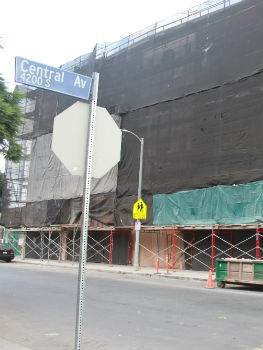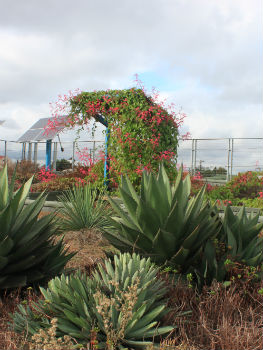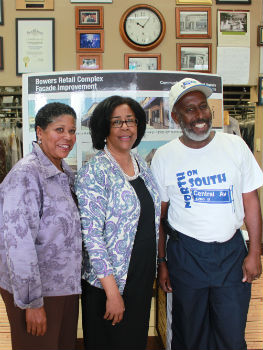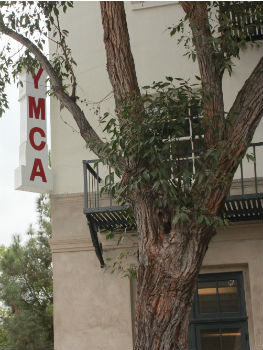
The Dunbar Hotel
“Are you taking pictures of the Dunbar Hotel? Let me tell you a story. My grandfather used to come here all the time in the thirties. He knew all of the greats. My friend, this place is historic.”
The author of these words is Tony, a 61 year-old African American Central Avenue resident, who radiates pride and respect as he remembers the past.
Ninth District Councilwoman Jan Perry, a candidate for mayor in the spring’s Los Angeles elections, shares Tony´s views on the historic importance of both this building and the surrounding neighborhood. Acting as a tour guide in the 2nd annual Found L.A: Festival of Neighborhoods, hosted by the non-profit L.A. Commons, Perry began her South Central Avenue tour in one of the most important landmarks of the area: the Dunbar Hotel.
Built in 1928, the Dunbar became a magnet for traveling African Americans. Originally known as the Hotel Somerville, “it was the focal point of the Central Avenue community during the 1930s and 1940s,” said Perry. “It hosted the first national convention of the NAACP (National Association for the Advancement of Colored People) to be held in the western United States.” Among many other noteworthy people, the Dunbar received Duke Ellington, Billie Holiday, Louis Armstrong, W.E.B. Du Bois and Thurgood Marshall.
Aware that the neighborhood’s vibrant past has gone astray, Perry is leading a rebirth for this block. The reason she picked the Dunbar Hotel as the starting point of the tour was to show the advancement of the Dunbar Village project.
This development will refurbish the Dunbar Hotel and renovate the existing Sommerville I and II apartments. All three properties will be connected to create the Village, an intergenerational community for seniors and families. The project, developed by Thomas Safran and Associates (TSA) and the local non-profit, Coalition for Responsible Community Development (CRCD) is scheduled to be completed by February, 2013.
Perry said that a similar project was tried in the 1990s but that it didn’t work because it was mismanaged.
Central Avenue Constituent Services Center

The rooftop plaza of the Central Avenue Constituent Services Center
Just a block away from the Dunbar Village, at Central and East 43rd Street, is Jan Perry’s district office: the Central Avenue Constituent Services Center. The two-year-old $14.7 million building was the tour’s second stop.
With a rooftop plaza –the first municipal green roof for the city of Los Angeles –the building was architecturally created to stimulate and bring joy to its historic neighborhood. The roof garden is planted with over 40 plant species native to Southern California, has wooden benches and is open to the public.
“I want the Service Center to be an extension of people´s homes,” said Perry while showing the group the rooftop. The Center sponsors a farmers market every Thursday between 10 a.m. and 3 p.m., and provides several educational activities aimed at helping community neighbors.
Bowers and Sons Cleaners

From left to right: Vivian Bowers, Councilwoman Jan Perry, Greg Cowan
The tour´s third stop was at Bowers and Sons Cleaners, a dry-cleaning business run by Vivian Bowers. With the help of her husband, Greg Cowan, this entrepreneurial woman manages a successful business.
Ms. Bowers is also president of the Central Avenue Business Association (CABA), which works to revitalize and revamp the business landscape of Central Avenue. The Bowers are interested in helping improve the community, and they serve on numerous advisory boards such as the Central Avenue Collaborative, the Council District Nine Community Advisory Committee, and the Central Avenue Historic Corridor Streetscape Project.
Final stop: The YMCA

The 28th Street YMCA building
The tour´s fourth and final destination was the 28th Street YMCA building that was designed by architect Paul Williams and constructed in 1926. Mr. Williams was the first African American member of the American Institute of Architects and known for designing homes for many Hollywood stars. The center is being rehabilitated to provide 49 units of permanent supportive housing for low-income individuals, community space designed to promote economic and workforce development, and supportive services.














